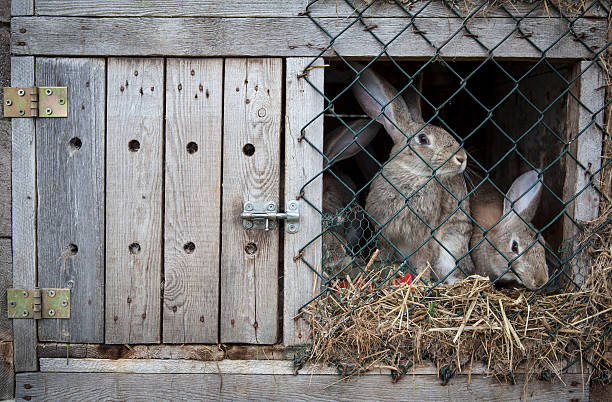Proper ventilation is vital for the health and well-being of your rabbits. Poor ventilation can cause respiratory problems and can lead to the buildup of harmful bacteria and ammonia in the hutch. In this article, we will discuss how to provide proper ventilation in a rabbit hutch.
Why Ventilation is Important
Ventilation is essential for regulating temperature, removing excess moisture, and maintaining air quality in the hutch. Rabbits are sensitive creatures that require a clean and dry environment to thrive. Poor ventilation can lead to the buildup of moisture, which can cause mold growth and lead to respiratory problems. Ammonia buildup from urine can also cause irritation to your rabbit’s eyes, nose, and respiratory system.
How to Provide Proper Ventilation?
There are several ways you can provide proper ventilation in a rabbit hutch.
Windows and Doors
One of the easiest ways to provide ventilation in a hutch is by adding windows or doors. This allows air to circulate through the hutch and prevent the buildup of moisture and ammonia. Windows should be placed on opposite walls to create a cross-breeze. Doors should also be equipped to allow for proper airflow.
Air Vents
Air vents can be added to the sides or roof of the hutch to provide airflow. These vents can be made of metal, plastic, or mesh wire. The size of the vents should be small enough to prevent predators from entering the hutch but large enough to allow for proper ventilation.
Wire Mesh
Wire mesh flooring can provide ventilation and prevent moisture buildup in the hutch. However, the mesh should be small enough to prevent your rabbit’s feet from getting caught, and it should be covered with a layer of bedding to prevent your rabbit from coming into direct contact with it.

Roof Openings
Roof openings can be added to the hutch to provide ventilation. These can be covered with a mesh screen to prevent predators from entering the hutch. The size of the openings should be small enough to prevent your rabbit from escaping but large enough to allow for proper airflow.
Fan
A fan can be added to the hutch to provide additional airflow. This is especially useful during hot and humid weather. However, the fan should be placed in a location where your rabbit cannot come into contact with it. It should also be protected from the elements to prevent damage.
Other Considerations
When providing ventilation in a hutch, it’s important to consider other factors that can impact your rabbit’s health and well-being. For example, the hutch should be placed in a location that is protected from the elements, such as wind and rain. It should also be elevated off the ground to prevent predators from digging underneath.
Proper ventilation is vital for the health and well-being of your rabbits. Windows, doors, air vents, wire mesh, roof openings, and fans are all effective ways to provide proper ventilation in a rabbit hutch. When providing ventilation, consider other factors that can impact your rabbit’s health and well-being, such as location and protection from the elements. By providing your rabbit with a clean and dry environment with proper ventilation, you can help ensure their happiness and longevity.
How to make a rabbit hutch more secure?
Making a rabbit hutch more secure is important to ensure the safety of your rabbit. Here are some tips on how to make a rabbit hutch more secure:
Check for damage or wear and tear regularly.
Use sturdy materials to construct the hutch.
Make sure the hutch is elevated off the ground to prevent predators from digging underneath.
Add a strong latch to the door to prevent your rabbit from escaping or predators from entering.
Use wire mesh with a small gauge to prevent predators from chewing through it.
Add a roof or cover to the hutch to protect your rabbit from the elements.
Consider adding a lock or padlock to the door for added security.
Provide a secure outdoor run or playpen for your rabbit to play and exercise in
Avoid placing the hutch in an area where predators are known to roam.
Use motion-activated lights or alarms to deter predators.